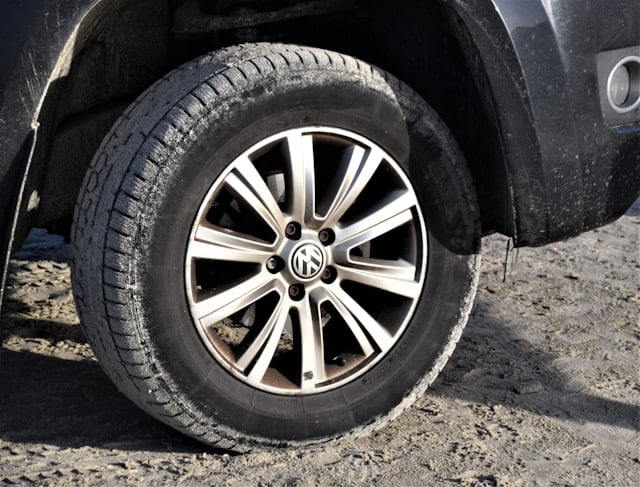Why Regular Tire Balancing Is Important After a Collision Repair Job
 After a vehicle collision, attention is often drawn to visible damage—dented panels, broken lights, or a misaligned frame. Yet, one crucial aspect may go unnoticed: the condition and balance of your tires.
After a vehicle collision, attention is often drawn to visible damage—dented panels, broken lights, or a misaligned frame. Yet, one crucial aspect may go unnoticed: the condition and balance of your tires.
At Chaney’s Collision Centers, we know that regular tire balancing after any collision repair is not just an add-on—it’s vital for safety, ride quality, and the longevity of your vehicle. Here’s why.
Understanding Tire Balancing
Tire balancing is the process of equalizing the weight distribution of a tire and wheel assembly so that it rotates smoothly. During the balancing procedure, technicians use specialized equipment to detect subtle weight disparities, adding small balance weights to the wheel rim to correct them. Even a few grams of imbalance can affect your vehicle’s performance, especially at higher speeds.
How Collisions Impact Tire Balance
A collision—no matter how minor—can disrupt tire balance in multiple ways:
- Forceful Impact: The shock from a crash can shift tire weights or slightly deform wheel rims, making previously balanced wheels suddenly out of balance.
- Bent Suspension or Steering Components: If the suspension or steering is damaged or misaligned, it can put unusual stresses on tires and wheels, amplifying minor imbalances.
- Uneven Tire Wear: Post-collision misalignments may cause abnormal tire wear, which further increases the risk of imbalance over time.
These factors mean that, after a collision repair, your tires are rarely in the same condition as before—even if the damage isn’t visible to the naked eye.
Why Regular Tire Balancing Matters
1. Safety Comes First
An unbalanced tire can lead to vibrations felt in the steering wheel, seats, or floorboard. These vibrations are not only uncomfortable, but can reduce your ability to maintain control—especially on wet or uneven surfaces. Over time, imbalance increases the risk of a blowout or sudden flat, threatening driver and passenger safety.
2. Improve Ride Comfort
Properly balanced tires ensure a smoother, quieter ride. Post-collision, restoring that balance is key to eliminating vibrations and shaking, letting you drive with confidence and comfort.
3. Maximize Tire Life and Save Money
Imbalanced tires wear unevenly, leading to premature tread loss or the need for replacement sooner than necessary. Regular balancing post-repair means your investment in new or existing tires is protected, reducing long-term costs.
4. Prevent Further Vehicle Damage
Persistent vibrations from imbalanced tires can cause additional wear and tear on your vehicle’s suspension, bearings, and steering components. Ignoring balance issues post-collision adds strain that may lead to costly repairs down the road.
When Should Tires Be Balanced?
It’s best to have your tires balanced:
- After any collision repair, no matter how minor the impact appeared.
- When you notice new vibrations or irregular noise after getting your car back.
- If repair work involved replacing, removing, or rotating tires or wheels.
- During routine tire rotations and maintenance—every 5,000 to 7,500 miles, or as your manufacturer recommends.
The Chaney’s Collision Centers Difference
At Chaney’s, we include tire balancing as a key step in post-collision repair quality control. Our experienced technicians use state-of-the-art balancing machines to ensure every wheel is precisely adjusted before your car returns to the road.
We believe that meticulous attention to details like tire balance is what sets exceptional repairs apart—keeping you safer, happier, and extending the life of your vehicle.
Conclusion
Tire balancing is more than maintenance—it’s a crucial post-repair step that safeguards your comfort, safety, and wallet. Trust Chaney’s Collision Centers to get it right, from the smallest weights to the biggest repairs, so you drive away with total peace of mind.

